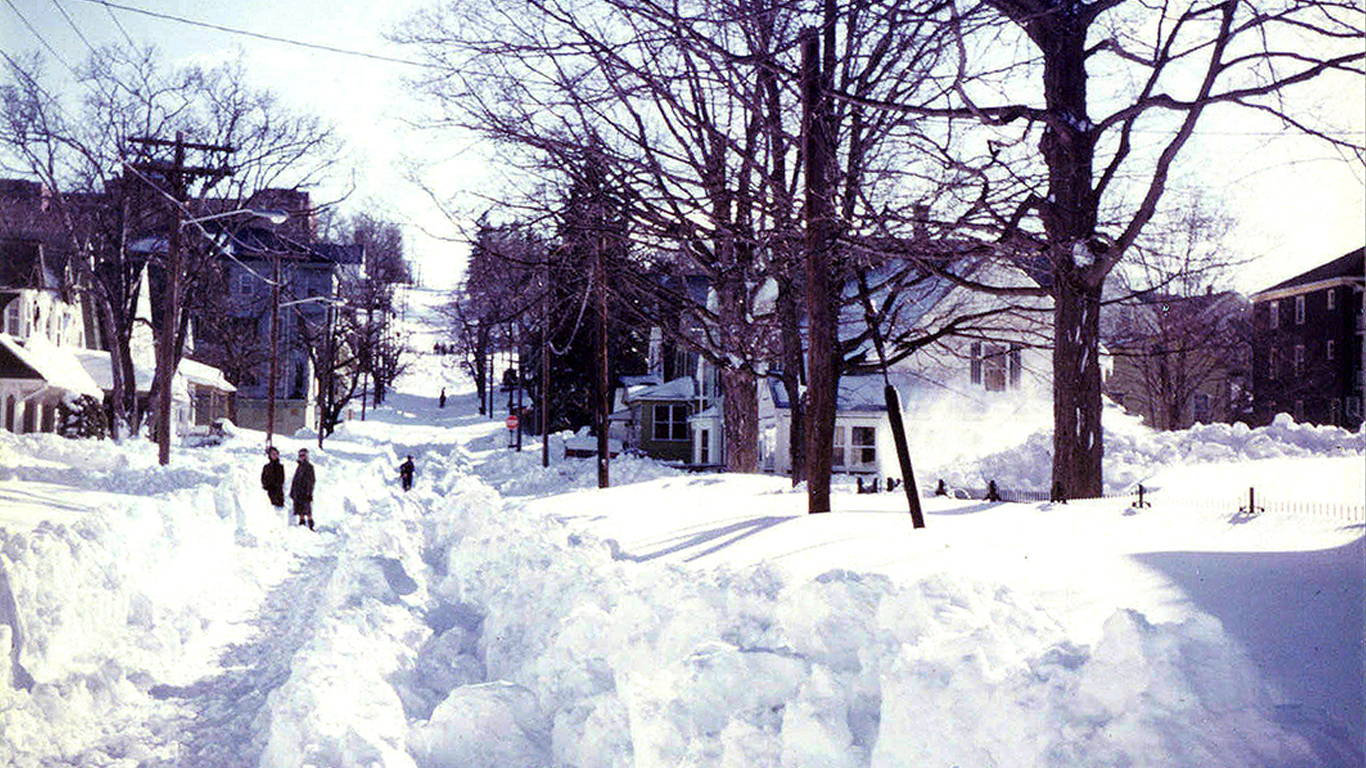
On Feb. 20, President Biden declared the state of Texas the site of a major disaster, making available federal funding for the relief of the millions of Texans who have been without water, food, electricity and even shelter in freezing conditions. The crisis in Texas came as a result of Winter Storm Uri, which swept across the United States, setting thousands of single-day cold or snowfall records, leaving nearly 10 million people without power and killing at least 70.
[in-text-ad]
Unlike hurricanes and earthquakes, there is no widely used scale or index for assessing the impact of snowstorms. In recent years, however, the meteorological community has made several successful attempts to establish a standard for measuring the impact of extreme snow events that can be used to compare snowstorms over time.
The Regional Snowfall Index, introduced in 2014, ranks a snowstorm impact on a scale of 1 to 5 using data on a storm’s area of snowfall, the amount of snowfall and the population affected. The RSI has since been used to retroactively classify nearly 600 snowstorms that occurred between 1900 and 2013.
To determine the worst blizzard of all time, 24/7 Wall St. ranked snowstorms based on their RSI values, as published by the National Oceanic and Atmospheric Administration (NOAA) National Centers for Environmental Information. As finalists to determine the worst blizzard, we included the 25 snowstorms designated as Category 5 since 1900. Data on duration, region, affected area and affected population also came from the NOAA. 24/7 Wall St. combined data on affected area and population for Category 5 storms that spanned multiple regions, considering it one event. Storm names, as well as measures of snowfall in the affected areas, came from various news and media sources.
The worst blizzard of all time is called the “White Hurricane.” It lasted from January 23, 1978, through January 28, 1978. The storm covered much of the Upper Midwest, with a total affected area of 233,580 square miles. Some 23.6 million people were affected. Among the hardest-hit cities by total snowfall was Dayton, Ohio, which received 12.9 inches.
Click here to read about the worst blizzards of all time.
The Average American Is Losing Momentum On Their Savings Every Day (Sponsor)
If you’re like many Americans and keep your money ‘safe’ in a checking or savings account, think again. The average yield on a savings account is a paltry .4%1 today. Checking accounts are even worse.
But there is good news. To win qualified customers, some accounts are paying more than 7x the national average. That’s an incredible way to keep your money safe and earn more at the same time. Our top pick for high yield savings accounts includes other benefits as well. You can earn a $200 bonus and up to 7X the national average with qualifying deposits. Terms apply. Member, FDIC.
Click here to see how much more you could be earning on your savings today. It takes just a few minutes to open an account to make your money work for you.
Thank you for reading! Have some feedback for us?
Contact the 24/7 Wall St. editorial team.


